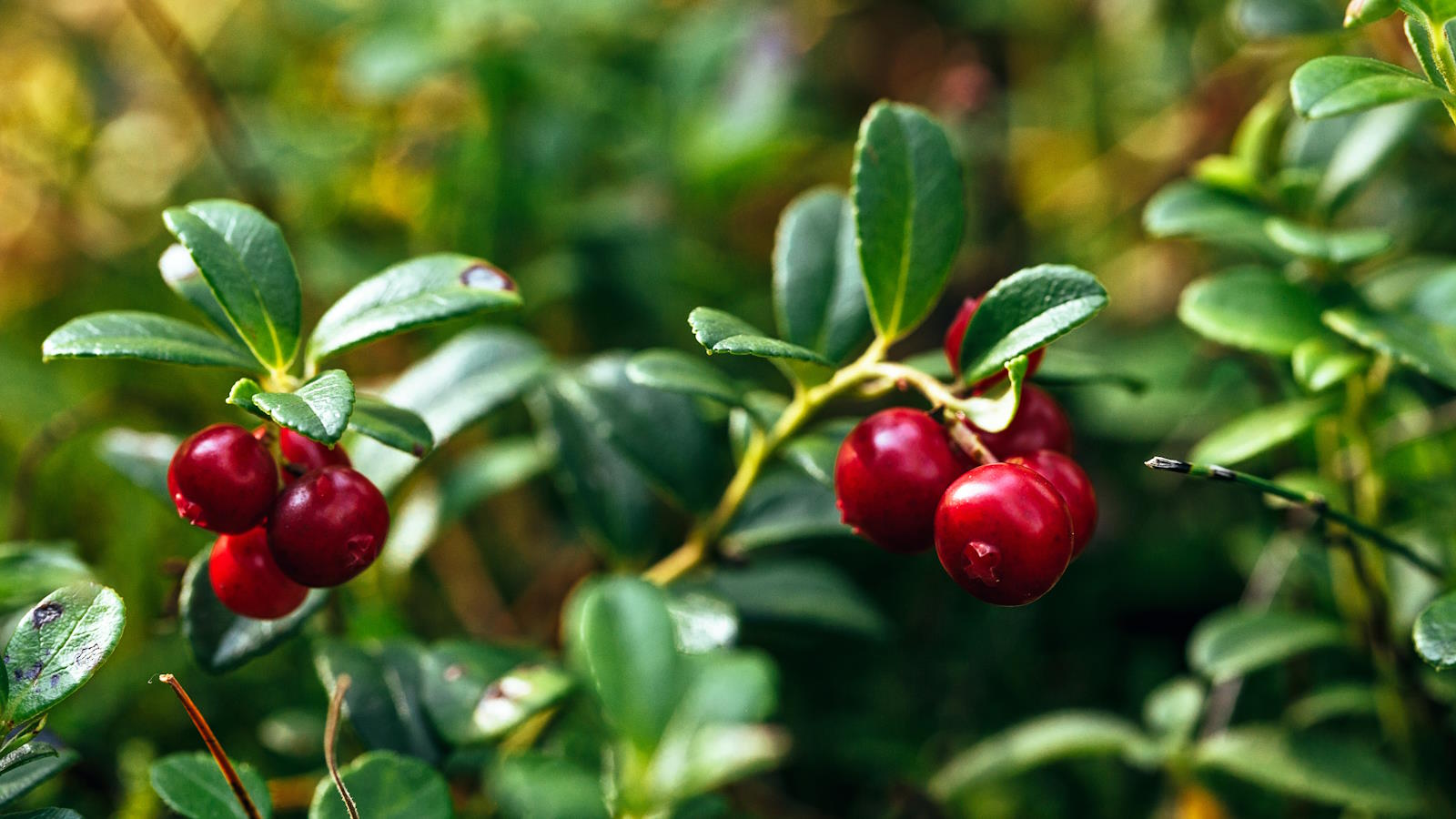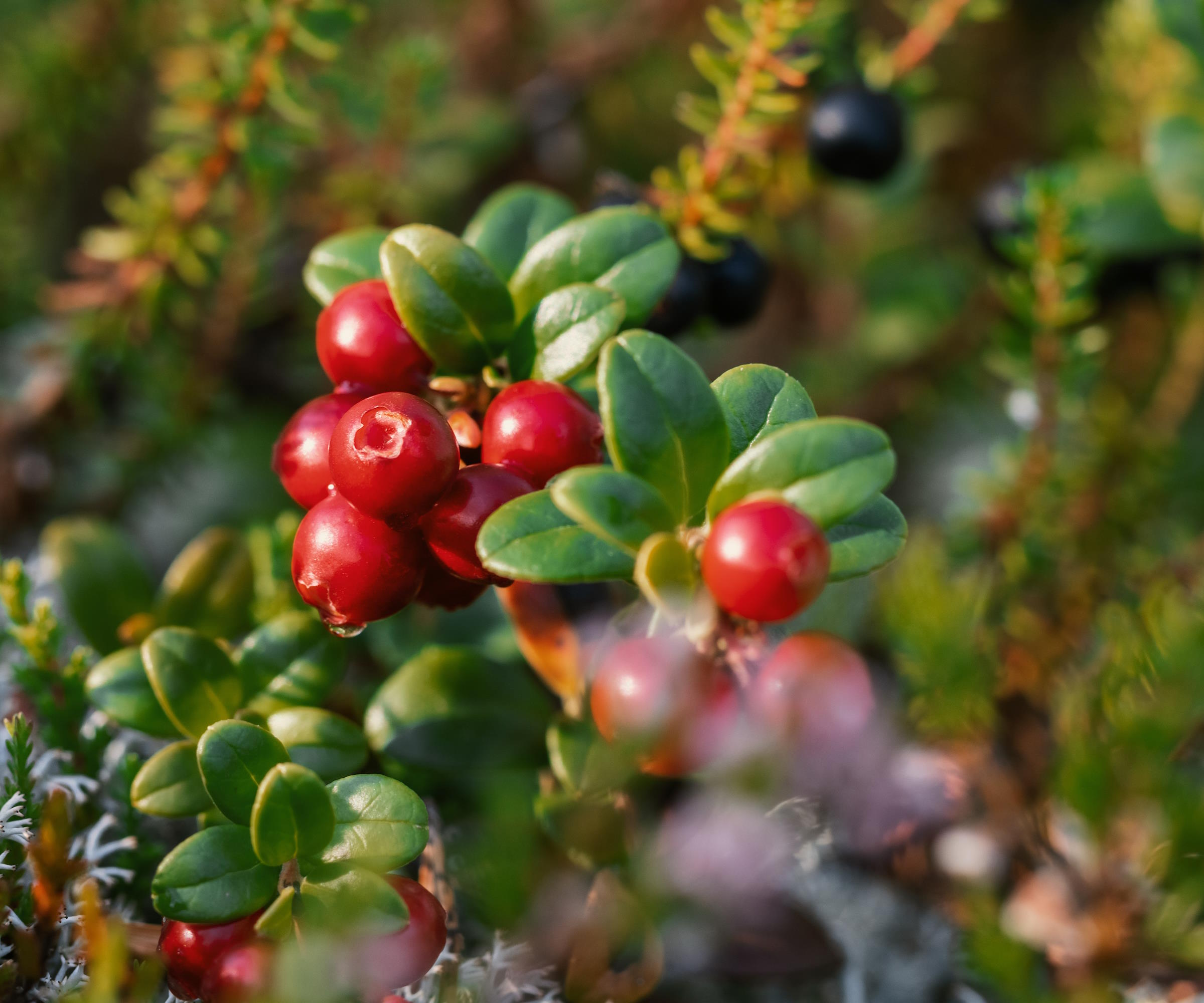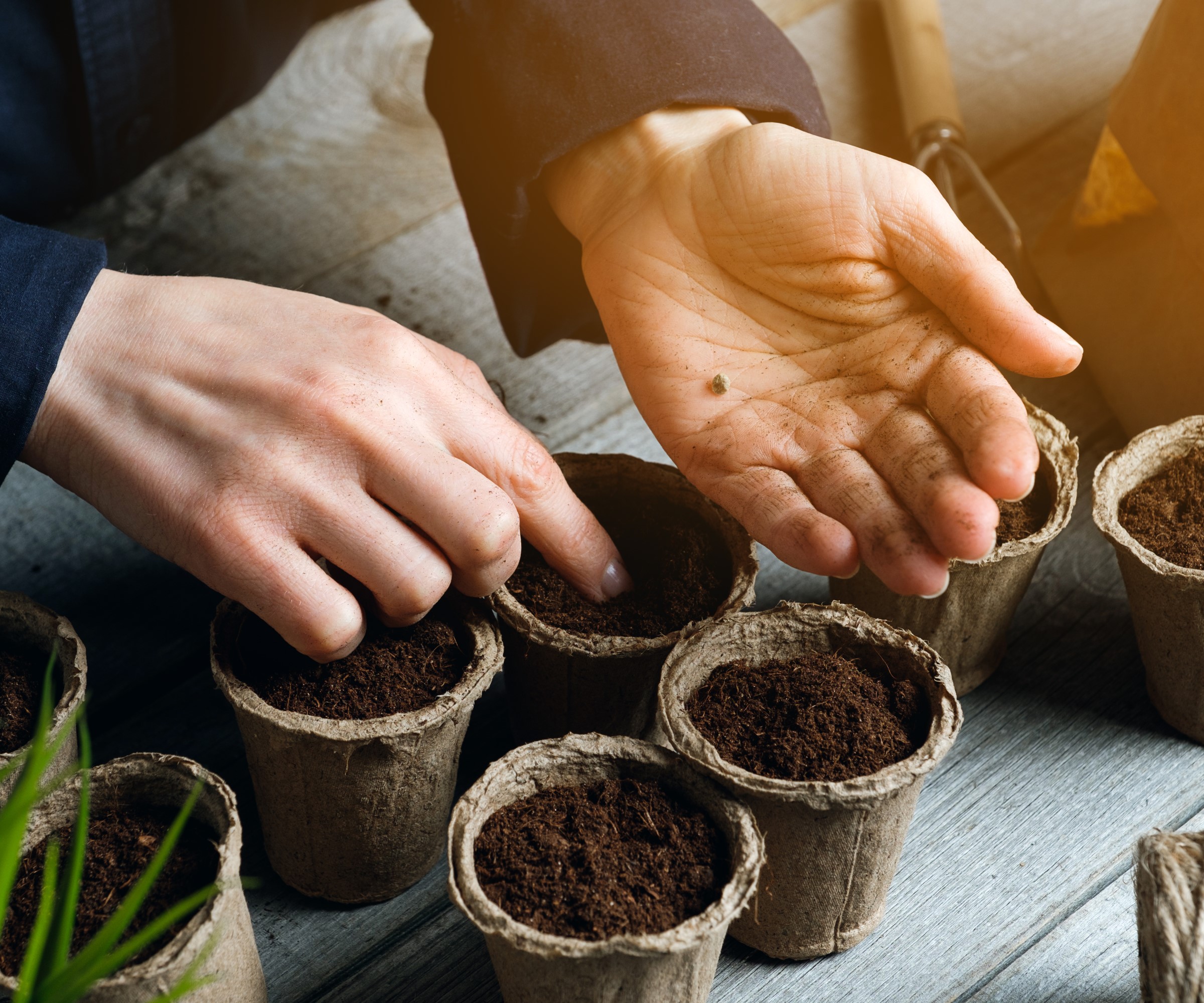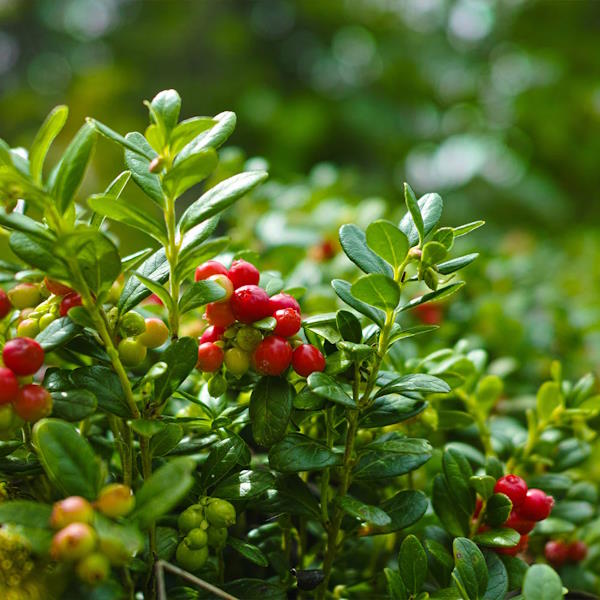How to grow cranberries – get the conditions just right for a bumper crop of these festive favorites
Discover the ideal site, soil, and care regime to get a good harvest of this superfood


Cranberries are most often found in juices, jams and sauces traditionally served at a festive dinner table. If you want to grow your own cranberries at home, it is possible to do, provided you're able to replicate the specific conditions they like best.
The plants themselves are lovely low-growing and evergreen bushes that are covered in pink flowers followed by dark red berries in late summer and fall.
Cranberries are often grown commercially in cranberry bogs on specialized farms. They can be grown in kitchen gardens or vegetable gardens, but most home growers will opt to grow them in pots as part of a container garden. Growing cranberries in pots may be the easiest way to give the plants the acidic soil and bog-like conditions that they prefer to grow in.
If you do want to add cranberries to your backyard ideas, we take a closer look at how to add plants to your garden along with some of the key care tasks to help keep cranberries happy and thriving.

Cranberries are rich in antioxidants
Types of cranberries to grow
There are thought to be more than 100 different varieties of cranberries that exist around the world. Vaccinium macrocarpon are the types of cranberry bushes native to North America and the most commonly seen types to grow at home.
Some of the most popular varieties to grow include ‘Early Black’, ‘Pilgrim’, and ‘Stevens’. However, you do see other plants referred to as cranberries. This includes the American cranberrybush, which is actually a viburnum that also produces edible red berries.

Cranberries are harvested in fall
How to grow cranberries at home
Cranberry plants are available to purchase from specialist nurseries and they are self-fertile - so you can get a crop of delicious berries with only one plant.
Design expertise in your inbox – from inspiring decorating ideas and beautiful celebrity homes to practical gardening advice and shopping round-ups.
The other favored method of propagating cranberries is from cuttings of existing plants. Cranberries can also be grown from seed, however it is not a popular method and germination is known to be unpredictable.
How to grow cranberries from cuttings

The best time to plant cranberries is in fall or spring
Taking cuttings from healthy cranberry bushes is a popular and proven way to get new plants for your backyard. It is relatively easy to take cranberry cuttings in the spring or early summer to grow them on ready to plant out after a few months spent establishing a good set of roots.
Always use clean and sharp pruning shears when taking cuttings. Using a blunt or dirty cutting tool is a mistake that can kill plant cuttings, as a jagged and bruised cut is more likely to rot in the compost.
To take softwood cuttings of cranberries, take 6-8 inch cuttings in spring or early summer of healthy plant material that has grown in the last year. Remove all but the top four leaves and any buds. and make a clean cut at the bottom just below a node. Dip the cut end of the stem in rooting hormone powder, such as Garden Safe Take Root Rooting Hormone available at Walmart, and place them 3-4 inches deep into small pots filled with a well-draining ericaceous compost.
Water the cuttings well and keep the soil moist, ensuring to neither let the soil dry out or end up waterlogged. Keep the cuttings in a warm spot in a greenhouse or on a windowsill, but out of direct sunlight. The cutting should put out roots within a couple of months and then rooted plants can then be planted outdoors in fall or spring.
How to grow cranberries from seeds

Seeds must be kept warm and moist to germinate
You can get cranberry seeds from stores and online if you do want to try growing cranberries from seed. While growing cranberries from seeds is not the norm, it is achievable with a bit of love and attention. It does require patience, however, as it can take at least three years to start getting fruit off a cranberry plant started from seed. You can get Vaccinium macrocarpon seeds at Amazon, or from other retailers.
Cranberry seeds will need a period of cold stratification before sowing. This means they require a period of cold to break the dormancy of the seed. This can simply be achieved at home by keeping them in a refrigerator for a few months prior to sowing.
The seeds can either be started in a greenhouse, or indoors on a warm windowsill. A heated propagator or heat mat, such as this Seedling Heat Mat available at Amazon, may be beneficial to help provide the required heat to the seedlings and improve the chances of successful germination. The seeds can be sown at any time of year, providing you can give them the levels of warmth and light they need.
Sow the seeds a quarter-of-an-inch deep in 3-4 inch pots filled with a good quality acidic compost. Cover the seeds lightly with soil and water them gently. Keep the pots in temperatures of at least 70°F.
Monitor the pots and keep the soil moist, but not waterlogged, and avoid letting the soil dry out at any stage. When the seedlings have germinated, thin them out to leave one strong young plant to grow on. Carry on growing the cranberry seedlings in a warm temperature around 70°F and keep it moist.
The young plant should be transplanted out into the garden after a full year of being in their pot, being planted in either spring or fall after a period of hardening off to get them fully acclimatized to life outdoors.
How to care for cranberries

Cranberries are often grown in cranberry bogs
Cranberries are best planted into the garden during their dormant season, which runs from late fall to early spring, however cranberries can be planted at any time of the year. They do have some specific conditions in which they thrive, however if you get them right then the plants can be simple to care for.
Cranberries prefer an acidic soil type with a pH of around 4.5 to 5.5. Conduct a test to see the pH of your soil prior to planting. There are ways to make soil more acidic or it may be easier to grow pots in a container garden in pots filled with ericaceous compost. They also do like wet, but not waterlogged, growing conditions - so well-draining soil is a must.
‘Cranberries demand consistent moisture, especially during their active growth phase,’ advises Aaditya Bhatta, founder of Plants Craze. ‘Regular watering at least once a week is essential, and more frequent irrigation may be necessary during hot, dry periods.’
A drip irrigation system may be beneficial, while commercial growers often flood their fields to try to replicate the semi-bog conditions that they grow naturally in. When growing cranberries in pots, standing the pot in a wide container that is regularly topped up with water can help replicate the ideal conditions for the plants.
It is recommended to water cranberries with rainwater, which has a lower pH than tap water - it is beneficial to consider rainwater harvesting, such as installing a rain chain to collect rainwater, to have year-round access to natural rainwater for your plants.
The plants also benefit from a light feeding with a balanced fertilizer specially formulated for acid-loving plants. Cranberries only have light feeding requirements and are harmed by over-fertilizing. Plants grown in the ground need only a light feeding in spring, while cranberries in containers can benefit from a monthly feed with a liquid fertilizer, such as the Ferti-Lome Acid Loving Water Soluble Plant Food available at Amazon.
Cranberries are harvested in September and October once the plants are a deep red in color. The berries can be picked off the plants by hand. Ripe cranberries can remain on the plants for months, though do need picking before your first winter frost. The berries can be stored for two months in the refrigerator, or they can be frozen.

Aaditya Bhatta is the founder and editor of Plants Craze, a website that offers tips and tricks on gardening and plant care. He has been a plant enthusiast and plant parent for over a decade.
FAQs
How long do cranberries take to grow?
Cranberries are low and creeping shrubs that can ultimately grow to 18 inches tall and seven feet wide. Cranberries can require patience as it can take at least three years to start producing fruit, if you start the plants from seed. Buying bare root cranberries will reduce the amount of time you need to wait to start getting a harvest.
Are cranberries difficult to grow?
Cranberries can be simple to grow, if you can provide the right conditions for them to thrive in. That includes the right acidic soil type and high moisture levels that the plants want.
Cranberries can be temperamental, for example they do not respond well to competition from other plants, including weeds, and react negatively to too much fertilization. The plants do also need a period of cold weather to go dormant in, so some US hardiness zones may be unsuitable for growing cranberries.
Cranberries are related to blueberries, a more commonly-seen kitchen garden favorite that also prefers to grow in acidic soil. If you want to grow blueberries, it is also a bush that is commonly grown from cuttings and rarely by seed.

Drew has worked as a writer since 2008 and was also a professional gardener for many years. As a trained horticulturist, he worked in prestigious historic gardens, including Hanbury Hall and the world-famous Hidcote Manor Garden. He also spent time as a specialist kitchen gardener at Soho Farmhouse and Netherby Hall, where he grew vegetables, fruit, herbs, and cut flowers for restaurants. Drew has written for numerous print and online publications and is an allotment holder and garden blogger. He is shortlisted for the Digital Gardening Writer of the Year at the 2025 Garden Media Guild Awards.
